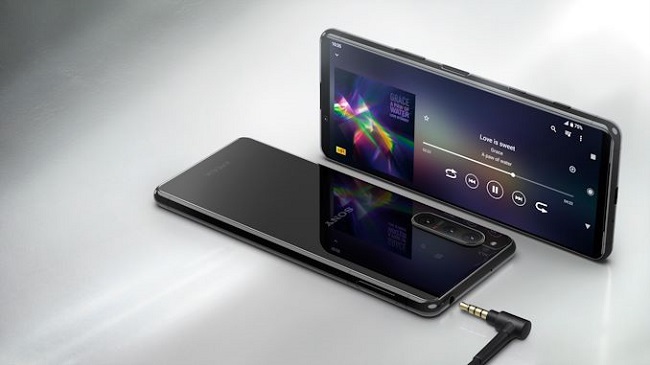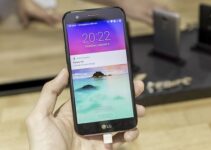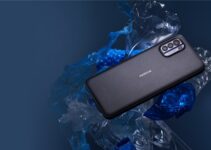Many people have been waiting for a compact flagship smartphone, and Sony has delivered with the Xperia 5 II.
All You Need To Know About the Sony Xperia 5 II
However, in order to fully take advantage of this phone’s appealing combination of high specifications and a manageable size, you will need to put in significant effort and pay a hefty price. This is the reality of the phone after I’ve used it for a few weeks.

Design
Like a well-oiled fish, smooth as glass. Apart of its small size and light weight, that’s the best way to characterise the Xperia 5 II. The 8mm profile and the vertical rather than horizontal orientation made possible by the 21:9 aspect ratio screen make it a very portable device.
Its light 163-gram weight and compact design make it easy to use with one hand and allow users to reach across the screen with their thumb. It slides off almost any surface it contacts and into your pocket or bag with ease.
The Xperia 5 II, with its glass back and aluminium frame, moves around on its own accord whenever placed on a surface that isn’t exactly level. Because of this, you need to hold on even more securely, as there is little to no grip from the human body. The phone’s design has one major flaw, however, and that’s the row of buttons that runs down the right side.
Aside from the screen, the only other physical buttons are the volume rocker on the top, the power button with fingerprint sensor embedded in it, the Google Assistant button in the middle, and the camera shutter button in the bottom.
If you pick up an Xperia 5 II, chances are you’ll accidentally touch a button—likely the pointless Google Assistant button, which can’t be remapped or turned off. A frustrating design decision compounded by the inability to choose whether or not to make advantage of the feature.
But, I prefer the actual camera shutter button, which is discreetly located at the bottom of the frame, and the fingerprint sensor is quick and accurate. Even though it’s a slim phone, it’s fantastic that it still has a 3.5mm headphone jack on top of the frame.
The pullout SIM card tray is convenient because it eliminates the need for a SIM removal tool without compromising the phone’s IP68 designation for resistance to moisture. The Sony Xperia 5 II is a great midsize smartphone because it is simple to use, portable enough for everybody, and constructed with high-quality materials. All the slipperyness is something you’ll just have to live with.
Screen:
The phone’s small size is in part due to its ultra-widescreen 21:9 aspect ratio display. Although 21:9 movies do exist, they are noticeably rarer than their 16:9 counterparts. Games like Minecraft, Asphalt 9, and Fortnite take advantage of the ultra-widescreen perspective, but most content you watch will still have black bars on either side.
Yet, this is the 2020 standard we’re after. The OLED display is 2520 by 1080 at 120 Hz and supports 10-bit HDR. While it lacks the 4K power of the Xperia 1 II, in everyday use you won’t even notice the difference in resolution, and the phone’s Creator Mode and image-enhancement technology are identical to those of the more expensive model.
I think it looks great, and I highly doubt many people will be sorry they didn’t spring for the Xperia 1 II. The visuals are stunning. Stunningly ethereal, with electric, hyper-vivid hues that practically burst from the screen.
The Xperia 5 II has great stereo speakers, thus watching music videos on it is a pleasant experience. Sony’s Dynamic Vibration function, meanwhile, provides a vibration timed to the action on screen. The fact that the strength can be varied explains its success. It’s an enjoyable bonus if you keep the volume down.
More content may be seen in feeds and messaging apps without the need to scroll when the phone is held in a vertical position, which is how most people use their phones. The Xperia 5 II may not be as visually stunning as the Xperia 1 II, but for the vast majority of people, that’s not a problem.
Camera:
The Xperia 5 II has three 12-megapixel cameras on the back: a regular camera with an aperture of f/1.7, a telephoto camera with an aperture of f/2.4, and an ultrawide camera with an aperture of f/2.2. In addition to a 3x optical zoom, HDR, 4K video recording, eye-tracking, and Dual Pixel autofocus, the lenses also boast optical and electronic image stabilisation from Sony and Zeiss Optics.
The Xperia 1 II’s rear design is nearly identical, with a few key differences. It shares the same flaws as the Xperia 1 II because of how close the two phones are. It captures stunning photographs with good balance and dynamic range, but it has trouble focusing in tight quarters.
There is plenty of realism and detail, but low-light photographs aren’t as startling as those captured with some other phones because it doesn’t have a night mode for super-bright night shots. By default, the 8-megapixel front-facing camera completely washes out skin tones, so it’s best to disable all of the enhancements before taking a selfie.
Most of the time, I’d use the Google Photos editing suite to improve the quality of my photos. It’s well worth it, as Sony’s camera records a wealth of mouthwatering detail. Due to the absence of live things in my immediate vicinity (thanks, 2020), I was unable to test out the Xperia 5 II’s eye-tracking capability.
But, I have used similar technology in the before and was extremely impressed. Capturing sharp portraits requires the ability to focus precisely on the subject’s eyes, a feature offered by only a select few mobile devices.
Sony’s specialist camera and cinema teams fine-tuned the Photo Pro and Cinema Pro apps, which are essentially enhanced manual modes, and are used to promote the Xperia cameras. If you frequently shoot in manual mode on your smartphone camera, you’ll be able to take stunning stills and videos with any of these apps.
Unfortunately, the learning curve is steep if you’ve never used manual mode and are unfamiliar with shutter speed, white balance, ISO, and manual focusing.
Hardware and Functionality
The Xperia 5 II, which I use as my primary phone, has not shown any performance issues in my regular life. The Qualcomm Snapdragon 865 processor, 8GB of RAM, and 128GB of storage ensure lightning-fast performance.
The 21:9 aspect ratio screen plays Asphalt 9 Legends beautifully, and the phone’s lightweight design makes it ideal for extended gaming and movie watching sessions. Sony’s Android 10 UI is clean and unobtrusive, and the software is quick and dependable.
Non-Sony apps, such as LinkedIn, are preinstalled and can be a nuisance with their constant notifications and difficult removal. Anyone accustomed to watching content on a broader screen will need some time to adjust to the taller screen.
It may feel cramped at first to scroll through Twitter or Instagram, and the icons may be packed in close together, but the ergonomic benefits of the form quickly become apparent.
Cost and Accessibility
The Sony Xperia 5 II may be pre-ordered in the United States for $949 (now discounted to $900) in advance of its debut on December 3. The price in the United Kingdom is currently 799 British pounds.


